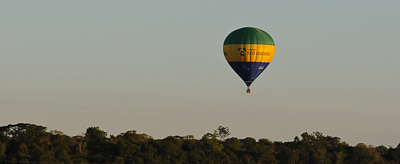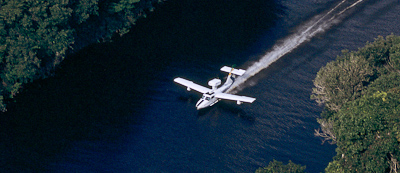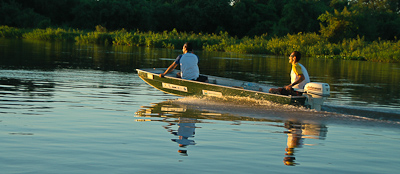The Flying Rivers Phenomenon
Flying rivers (*) are air currents that bring water vapour from Amazonia, in the equatorial zone of Northern South America, down as far south as Northern Argentina. The humidity carried by these “airborne rivers” is responsible for much of the rain that falls in the Centre-West, Southeast and South of Brazil.
When coming into contact with certain meteorological conditions, such as a cold front for example, this humidity (which we do not even notice) can be transformed into rain. Rain which is vitally important for life in general and for the country’s economy, irrigating crops, filling up the real land-based rivers and the dams which provide our energy.
Amazing as it might seem, the quantity of water transported by the flying rivers could well be equivalent to or even greater than the flow of the mighty Amazon itself Prof. Antonio Nobre (INPE) has calculated the total amount of water released into the atmosphere every day by the rainforest at around 20 billion tonnes (20 trillion litres). This compares interestingly with the total volume of water discharged daily (at a rate of 200,000 cubic metres per second) into the Atlantic by the Amazon River: 17 billion tonnes.
Brazil has a very privileged position with regard to water resources. However, with global warming and climate change threatening to change rainfall patterns on a world-wide scale, it is time for us to take a better look at the environmental services provided by the rainforest before it is too late.
In November 2014, Prof. Antonio Nobre released a graphic scientific analysis on the future climate of Amazonia, stressing the importance of taking immediate action not only to preserve the remaining forest but even to replant degraded areas. He warns that failure to do so will have drastic long-term effects on rainfall in Brazil, leading to further droughts and the savannization of the Amazon basin.
You can read the report clicking on this link: The Future Climate of Amazonia
* The term “rios voadores” or flying rivers, also known as ‘aerial rivers’, was popularised in Brazil by Dr. José Marengo (CPTEC) to describe a meteorological phenomenon known technically as the “low level jets”, air currents that carry water vapour across Amazonia and down the eastern flank of the Andes towards other regions of Brazil and even as far as Northern Argentina.





